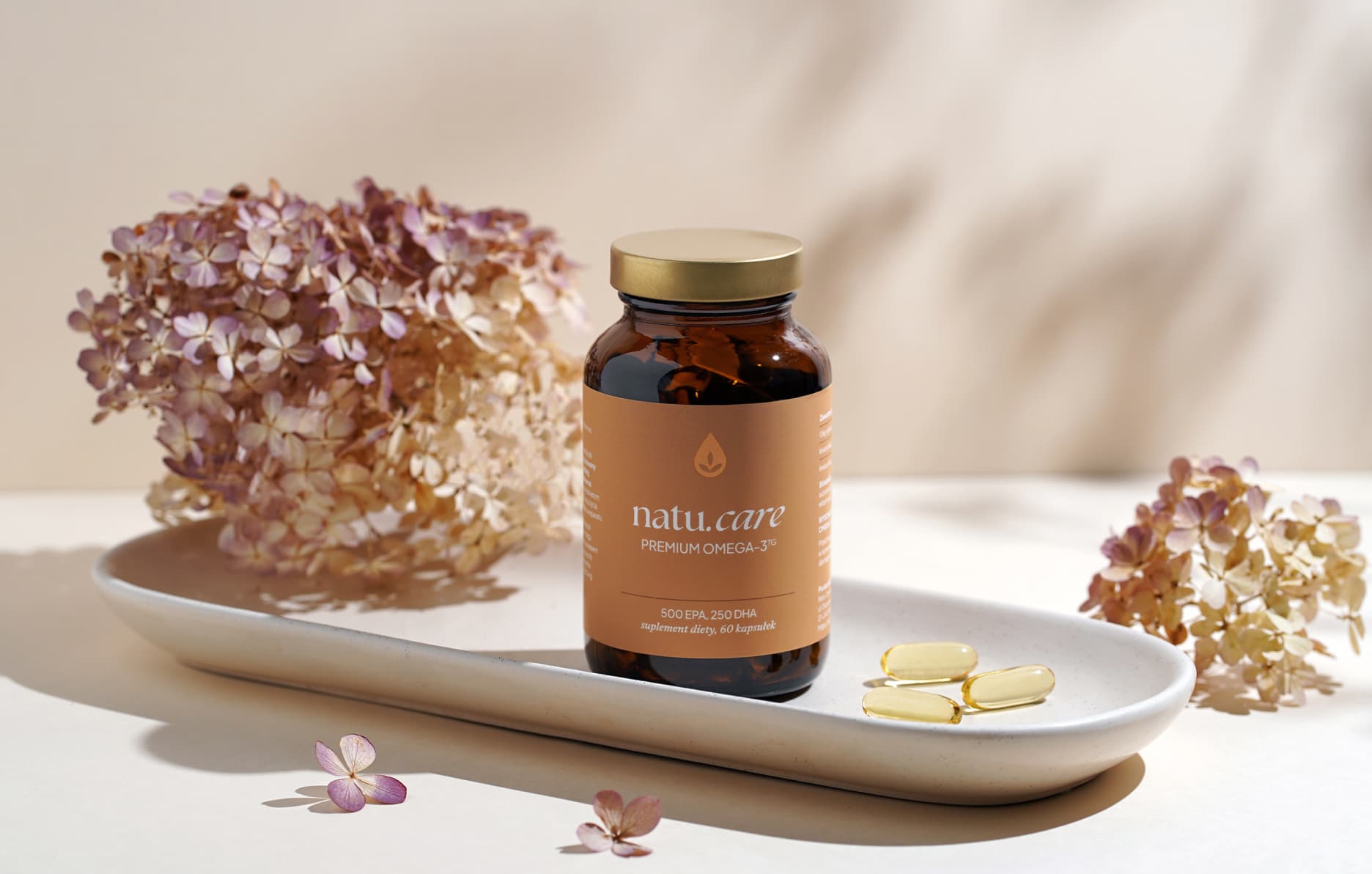Glucosamine for knee, hip and other joints [reviews].
Find out how glucosamine works for your joints and what ailments it can help you with.


Learn more about our editorial process
.

Learn more about our editorial process
.

Learn more about our editorial process
.

Learn more about our editorial process
.![Glucosamine for knee, hip and other joints [reviews].](https://cdn-resources.natu.care/uploads/1/glukozamina_hero_7d516fae9b.jpg)
Why you can trust us
Articles on Natu.Care are written based on scientific research, data from government websites and other reliable sources. The texts are written in cooperation with doctors, nutritionists and other health and beauty experts. Articles are reviewed before publication and during significant updates.
.Learn more about our editorial process
.Information about advertisements
Content on Natu.Care may contain links to products from the sale of which we may receive a commission. When creating content, we adhere to high editorial standards and take care to be objective about the products discussed. The presence of affiliate links is not dictated by our partners, and we select the products we review ourselves completely independently.
.Learn more about our terms and Conditions
.Glucosamine is a substance essential for the formation of joint cartilage. It is also a drug with indications for osteoarthritis, especially of the knee and hip.
And yet, the medical regulatory authorities of various countries are taking an increasingly distanced approach to the recommendation of glucosamine. Some do not even indicate it as a treatment option. Together with Ilona Krzak, MSc, pharmacist, we take a look at the possible reasons for this approach to glucosamine.
As a result, we will look at the possible reasons for this approach to glucosamine.
From this article you will learn:
- What glucosamine is and where it occurs. .
- Whether this substance can help with joint disease. .
- How should glucosamine be dosed.
- How should glucosamine be dosed?
- Whether it can and should be combined with other joint-supporting substances.
- How does it help with joint disease?
- What are its contraindications and side effects. .

Sprawdź, jak może on zadbać o zdrowie Twoich stawów i urodę! Kolagen Premium (10 000 mg) wiśnia -15% z kodem BLOG15
Natu.Care Kolagen Premium 10000 mg, wiśnia
Natu.Care Kolagen Premium dla zdrowia stawów, skóry, paznokci i włosów. Wołowy kolagen w optymalnej dawce 10 000 mg. Przebadany przez niezależne laboratorium.
Sprawdź cenę
Ten kolagen dobrze się rozpuszcza, super smakuje – jak taki soczek wiśniowy. Moje włosy przestały wypadać, są gęstsze i zdrowsze a cera promienna.@Dominika P.
See also:
.
- Collagen for joints .
- Collagen for tendons
- Collagen for bones
- Collagen for athletes
- Collagen for runners
- Collagen for tennis elbow
- Chondroitin .
- Lysine
- Glycine
- Proline .
What is glucosamine?
.
From a chemical point of view, glucosamine is an amino sugar that occurs naturally in the body. It is essential for the production of proteoglycans, which are part of joint cartilageand.
Glucosamine provides the building blocks for cartilage..
 .
.
Ilona Krzak Master of Pharmacy
Glucosamine is an ingredient in medicines and dietary supplements used to treat joint disorders - in particular osteoarthritis of the knee and hip. It can be synthesised artificially or naturally: extracted from chitin, which is what insect and crustacean shells are made ofand.
Glucosamine is mainly found in three formsand:
.
- glucosamine sulphate, .
- glucosamine hydrochloride, .
- N-Acetylglucosamine, .
The first two forms are the most commonly used in glucosamine preparations, while N-Acetylglucosamine is the one that occurs naturally in your bodyand.
.
Does glucosamine help joints?
.
In the course of arthritis, abnormalities in proteoglycan synthesis have been observed. Taking glucosamine, which supports their production, is thought to regulate this synthesis and ensure that joint cartilage functions properlyand.
Proteoglycans are responsible for such cartilage properties as elasticity and strength..
 .
.
Ilona Krzak Master of Pharmacy
.
In addition to the protective and restorative role of glucosamine, research suggests that it may also have a anti-inflammatory effect. Interestingly, despite numerous scientific papers, the exact mechanism of action of this substance is not yet fully understoodand.
It is also worth mentioning that in Europe, glucosamine has been approved for use as prescription drug used in osteoarthritis (especially in gonarthrosis)and. In contrast, in the United States, the substance is only sold as a dietary supplement, and the American College of Rheumatology does not recommend the use of glucosamine for the treatment of arthritisand.
What does the research say?
.
Well, does it work or doesn't it? Opinions are divided even among scientists. Although it should be noted that many of the scientific papers on glucosamine have been sponsored by manufacturers of formulations containing it... Ups.
In vitro studies have demonstrated the effects of glucosamine on three structures related to joint functionand:
.
- the synovial membrane, .
- articular cartilage, .
- subchondral bone, .
The main activity was observed in chondrocytes, where glucosamine reversed the action of interleukins, or pro-inflammatory cytokines. This could be indicative of the anti-inflammatory properties of this amino sugar.
So in theory - it works. But research on a slide is one thing, and the actual effect in patients, is another. Does glucosamine really provide relief from osteoarthritis?"
.
The results of the 2023 study review confirm the pain-relieving properties of glucosamine - in this respect it proved more effective than placebo. However, this improvement was by no means spectacular. Fifteen studies involving a total of 2,859 participants were eligible for the review. Pain was measured using the WOMAC, the pain scale for osteoarthritisand.
The eye of the horse fatteneth the horse
.Browsing through the scientific papers, I also found a large group of ones that may have been funded to a greater or lesser extent by pharmaceutical companies. And imagine that their results were more favourable. The glucosamine used in them worked as if better...
In contrast, a 2018 meta-analysis reported an effect of glucosamine on reducing joint stiffness, but no significant changes in other parameters (pain, improved function)and.
A 2015 study found results suggesting that taking glucosamine preparations had better analgesic effects than paracetamol and comparable to NSAIDs. Evidence from the study was conducted via questionnaires. Additionally, the researchers highlighted the greater efficacy of prescription glucosamine preparationsand.
In a 2018 review that included 18 studies, the results of 12 of them confirm that glucosamine relieves osteoarthritis pain. However, in the remaining six studies, its effect was not shown to be superior to placeboand.
If you're reading this and basically know you know nothing (well, because once it works, once it doesn't...), then you're pretty close to what scientists have been able to establish so far. In short: it works a little, but not always. That's why the latest guidelines from the European League Against Rheumatism (EULAR) recommend that you try glucosamine treatment for six months and, if there's no visible improvement, stop itand.
What daily dose is effective?
.
A 1,500 mg of glucosamine, preferably in the form sulphate, is considered by experts to be a safe and effective daily dose. It is usually taken orally, either at one time or broken up into three doses - 500 mg eachand.
Is it worth combining glucosamine with chondroitin?
.
Glucosamine and chondroitin are a popular combination in dietary supplements aimed at improving joint function. Research studies also often test the interaction of the two substances, and the results are arguably even more divergent and controversial than those for glucosamine aloneand.
Some have argued that chondroitin may also have an analgesic effect and improve joint mobility, by affecting the production of joint lubricant and the quality of the cartilage itself. The combination of these two substances should therefore act more comprehensively and complement each otherand.
It is worth mentioning that both substances are part of the SYSADOA group of drugs, i.e. slow acting symptomatic drugs for ostheoarthritis)and.
What is better for joints - glucosamine or collagen?
.
It is impossible to answer this question unequivocally. On the one hand, the positive effects of collagen on joints and the musculoskeletal system are well-known and supported by many scientific studies; on the other hand, if you are looking for a preparation in the form of a drug, of these two you are left with glucosamine, because collagen-drug does not existand.
.
You don't actually have to choose. There are collagen preparations on the market with glucosamine (and often still chondroitin).
Glucosamine sulphate stimulates the synthesis of glycosaminoglycans and increases the expression of type II collagen in chondrocytes and prevents their degradation by reducing the production of prostaglandins..
 .
.
Ilona Krzak Master of Pharmacy
.
Glucosamine - drug or supplement?
.
Most often medicines contain glucosamine in a higher dose. Any preparation registered as a medicine must also have the appropriate clinical studies to prove its effectiveness. Furthermore, dietary supplements are not regulated as strictly as medicines, so their composition and quality can vary.
Drugs can contain up to 1,500 mg of glucosamine per dose. In addition, the bioavailability of glucosamine sulphate is greater than that of hydrochloride..
 .
.
Ilona Krzak Master of Pharmacy
.
Nevertheless, good-quality dietary supplements may also have clinical and laboratory tests to confirm their effects and the purity of their composition. Their manufacturers also take care to ensure the correct daily dose and the quality of the ingredients used in the production of these preparations.
Best glucosamine for joints in supplement form
.
See preparations containing glucosamine and other substances valuable for your musculoskeletal system. Act comprehensively!
See also:
.
- Knee crunch
- Joint pain
- Gonarthrosis
- Knee pain
- Tennis elbow
- Golfer's elbow
- Grandmother's ways for joints
- Home remedies for knee pain .
Who should not take glucosamine?
.
Glucosamine is a safe agent that does not usually cause adverse reactions. It can be taken at the same time as NSAIDs. However, even this substance, may not be recommended for some people.
A contraindication to taking glucosamine is certain cardiovascular conditions, including heart failure and disorders of its conduction system. It should also not be used by women in the first trimester of pregnancyand.
It is also recommended to monitor blood glucose levels when using glucosamine sulphate. Additionally, glucosamine supplementation may be associated with increased intraocular pressure and may contribute to the pathogenesis of glaucoma. Therefore, it is important to keep an "eye on it"..
 .
.
Ilona Krzak Master of Pharmacy
Glucosamine may also interact with warfarin (exacerbating its anticoagulant effects) and acetaminophen (reducing the drug's effectiveness)and. Acetaminophen is an ingredient in the popular Paracetamol.
There are indications that glucosamine may increase the absorption of antibiotics from the tetracycline group..
 .
.
Ilona Krzak Master of Pharmacy
.
Does glucosamine have side effects?
.
Like any active substance, glucosamine can cause side effects. Among the most common areand:
- nausea, .
- gravity, .
- diarrhoea, .
- constipation, .
In subjects with pre-existing liver damage, symptoms of hepatotoxicity were observed during a three-week supplementation..
 .
.
Ilona Krzak Master of Pharmacy
.
Also, symptoms outside the digestive system are also observed in some people, such asand:
- insomnia, .
- skin lesions, .
- headache, .

Sprawdź, za co pokochały go tysiące klientek Natu.Care Premium Omega-3ᵀᴳ -15% z kodem BLOG15
Natu.Care Omega-3ᵀᴳ Premium
Natu.Care Omega-3ᵀᴳ Premium dla zdrowia serca, mózgu i odporności. Najlepsza przyswajalność. Optymalna dawka 750 mg. Przebadana przez niezależne laboratorium.
Zobacz więcej
Produkt ma super skład, transparentną etykietę i co dla mnie jest ważne – małe kapsułki do połknięcia. Nie ma też nieprzyjemnego efektu odbijania rybą, który miałam spożywając inne produkty. Widzę znaczną poprawę odporności. Polecam!@Kasia P.
Summary
.
- Glucosamine is an amino sugar that is involved in the remodelling of joint cartilage.
- Some studies suggest that glucosamine supports joint synovial production and promotes cartilage health. It may also exhibit anti-inflammatory and pain-relieving effects.
- The efficacy of glucosamine has been controversial, but preparations containing it have been registered as a treatment for osteoarthritis.
- As a support for musculoskeletal ailments, it is recommended to combine glucosamine with chondroitin, as well as with collagen.
- As a support for musculoskeletal ailments, it is recommended to combine glucosamine with chondroitin and also with collagen.
- Contraindications to taking glucosamine are certain cardiovascular conditions, the use of certain medications and the early stages of pregnancy.
- The use of glucosamine is not recommended.
- In some people, glucosamine may cause some side effects - especially those related to the gastrointestinal tract. .
FAQ
.What does glucosamine work for?
.Glucosamine mainly acts on joints and cartilage. To benefit from its effects, take it regularly and pay attention to your daily intake. Taking too low a dose may not produce the desired results, and too high a dose may cause side effects. Often glucosamine is used in combination with other ingredients, such as collagen or chondroitin, which can support its effects.
Always talk to your doctor before starting glucosamine supplementation. He or she can assess your needs and adjust the dosage.
Is glucosamine over-the-counter?
.Yes, you can buy glucosamine without a prescription - in the form of a dietary supplement. When choosing such a product, check its composition and daily dose. Ideally, the active ingredient should be 1,500 mg per day and come in the form of glucosamine sulphate.
When does glucosamine start to take effect?
.After ingestion, glucosamine is absorbed into the body after 10-24 hours. However, you have to wait much longer to see the effects of its use. Most often, you may notice an improvement after 2-4 weeks of use, but this depends on the individual body and your state of health.
What not to combine glucosamine with
.Glucosamine should not be combined primarily with warfarin and acetaminophen (i.e. the popular Paracetamol). However, if you are taking any medication, or dietary supplements, seek advice from your doctor or pharmacist before taking glucosamine.
Can you take NSAIDs while taking glucosamine?
.Yes, NSAIDs, or non-steroidal anti-inflammatory drugs, can also be taken along with glucosamine. Glucosamine does not interact with them.
.Where does glucosamine occur naturally?
.Glucosamine occurs naturally in the body, particularly as a component of joint tissues. It is a key building block of articular cartilage. Its natural production can help maintain healthy joints and reduce joint-related discomfort.
Does glucosamine have an anti-inflammatory effect?
.Yes, glucosamine can have an anti-inflammatory effect. Glucosamine helps to reduce inflammation, stiffness and pain in the joints. It is worth bearing in mind that efficacy and dosage may vary according to individual needs, so it is worth seeking advice from your doctor in this regard.
.
Resources
.See all
.Bruyère, O., Altman, R. D., & Reginster, J.-Y. (2016). Efficacy and safety of glucosamine sulfate in the management of osteoarthritis: Evidence from real-life setting trials and surveys. Seminars in Arthritis and Rheumatism, 45(4, Supplement), S12-S17. https://doi.org/10.1016/j.semarthrit.2015.11.011
Conrozier, T., & Lohse, T. (2022). Glucosamine as a Treatment for Osteoarthritis: What If It's True? Frontiers in Pharmacology, 13. https://www.frontiersin.org/articles/10.3389/fphar.2022.820971
Glucosamine and Chondroitin for Osteoarthritis. (n.d.). NCCIH. Retrieved January 18, 2024, from https://www.nccih.nih.gov/health/glucosamine-and-chondroitin-for-osteoarthritis-what-you-need-to-know
Glucosamine Information | Mount Sinai-New York. (n.d.). Mount Sinai Health System. Retrieved January 18, 2024, from https://www.mountsinai.org/health-library/supplement/glucosamine
Glucosamine sulfate in the treatment of knee osteoarthritis symptoms: A randomized, double-blind, placebo-controlled study using acetaminophen as a side comparator. (n.d.). https://doi.org/10.1002/art.22371
Is there any scientific evidence for the use of glucosamine in the management of human osteoarthritis? | Arthritis Research & Therapy | Full Text. (n.d.). Retrieved January 18, 2024, from https://arthritis-research.biomedcentral.com/articles/10.1186/ar3657
MD, R. H. S. (2016, October 19). Do glucosamine and chondroitin supplements actually work for arthritis? Harvard Health. https://www.health.harvard.edu/blog/the-latest-on-glucosaminechondroitin-supplements-2016101710391
Ogata, T., Ideno, Y., Akai, M., Seichi, A., Hagino, H., Iwaya, T., Doi, T., Yamada, K., Chen, A.-Z., Li, Y., & Hayashi, K. (2018). Effects of glucosamine in patients with osteoarthritis of the knee: A systematic review and meta-analysis. Clinical Rheumatology, 37(9), 2479-2487. https://doi.org/10.1007/s10067-018-4106-2
Reginster, J.-Y., Neuprez, A., Lecart, M.-P., Sarlet, N., & Bruyere, O. (2012). Role of glucosamine in the treatment for osteoarthritis. Rheumatology International, 32(10), 2959-2967. https://doi.org/10.1007/s00296-012-2416-2
Veronese, N., Demurtas, J., Smith, L., Reginster, J.-Y., Bruyère, O., Beaudart, C., Honvo, G., & Maggi, S. (2020). Glucosamine sulphate: An umbrella review of health outcomes. Therapeutic Advances in Musculoskeletal Disease, 12, 1759720X20975927. https://doi.org/10.1177/1759720X20975927
Vo, N. X., Le, N. N. H., Chu, T. D. P., Pham, H. L., Dinh, K. X. A., Che, U. T. T., Ngo, T. T. T., & Bui, T. T. (2023a). Effectiveness and Safety of Glucosamine in Osteoarthritis: A Systematic Review. Pharmacy, 11(4), 117. https://doi.org/10.3390/pharmacy11040117
Vo, N. X., Le, N. N. H., Chu, T. D. P., Pham, H. L., Dinh, K. X. A., Che, U. T. T., Ngo, T. T. T., & Bui, T. T. (2023b). Effectiveness and Safety of Glucosamine in Osteoarthritis: A Systematic Review. Pharmacy, 11(4), Article 4. https://doi.org/10.3390/pharmacy11040117
Vo, N. X., Le, N. N. H., Chu, T. D. P., Pham, H. L., Dinh, K. X. A., Che, U. T. T., Ngo, T. T. T., & Bui, T. T. (2023c). Effectiveness and Safety of Glucosamine in Osteoarthritis: A Systematic Review. Pharmacy, 11(4), Article 4. https://doi.org/10.3390/pharmacy11040117
Williams, C., & Ampat, G. (2023a). Glucosamine Sulfate. In StatPearls. StatPearls Publishing. http://www.ncbi.nlm.nih.gov/books/NBK558930/
Williams, C., & Ampat, G. (2023b). Glucosamine Sulfate. In StatPearls. StatPearls Publishing. http://www.ncbi.nlm.nih.gov/books/NBK558930/
.Zhu, X., Sang, L., Wu, D., Rong, J., & Jiang, L. (2018). Effectiveness and safety of glucosamine and chondroitin for the treatment of osteoarthritis: A meta-analysis of randomized controlled trials. Journal of Orthopaedic Surgery and Research, 13(1), 170. https://doi.org/10.1186/s13018-018-0871-5
.
Editorials
Meet the team

Ilona Krzak obtained her Master of Pharmacy degree from the Medical University of Wrocław. She did her internship in a hospital pharmacy and in the pharmaceutical industry. She is currently working in the profession and also runs an educational profile on Instagram: @pani_z_apteki


Chondroitin helps the joints and other elements of the body.

Glutathione is one of the most potent antioxidants for supporting the body's health. Find out how it works and where to get it from.

See why hip joints hurt and how to treat their ailments.
